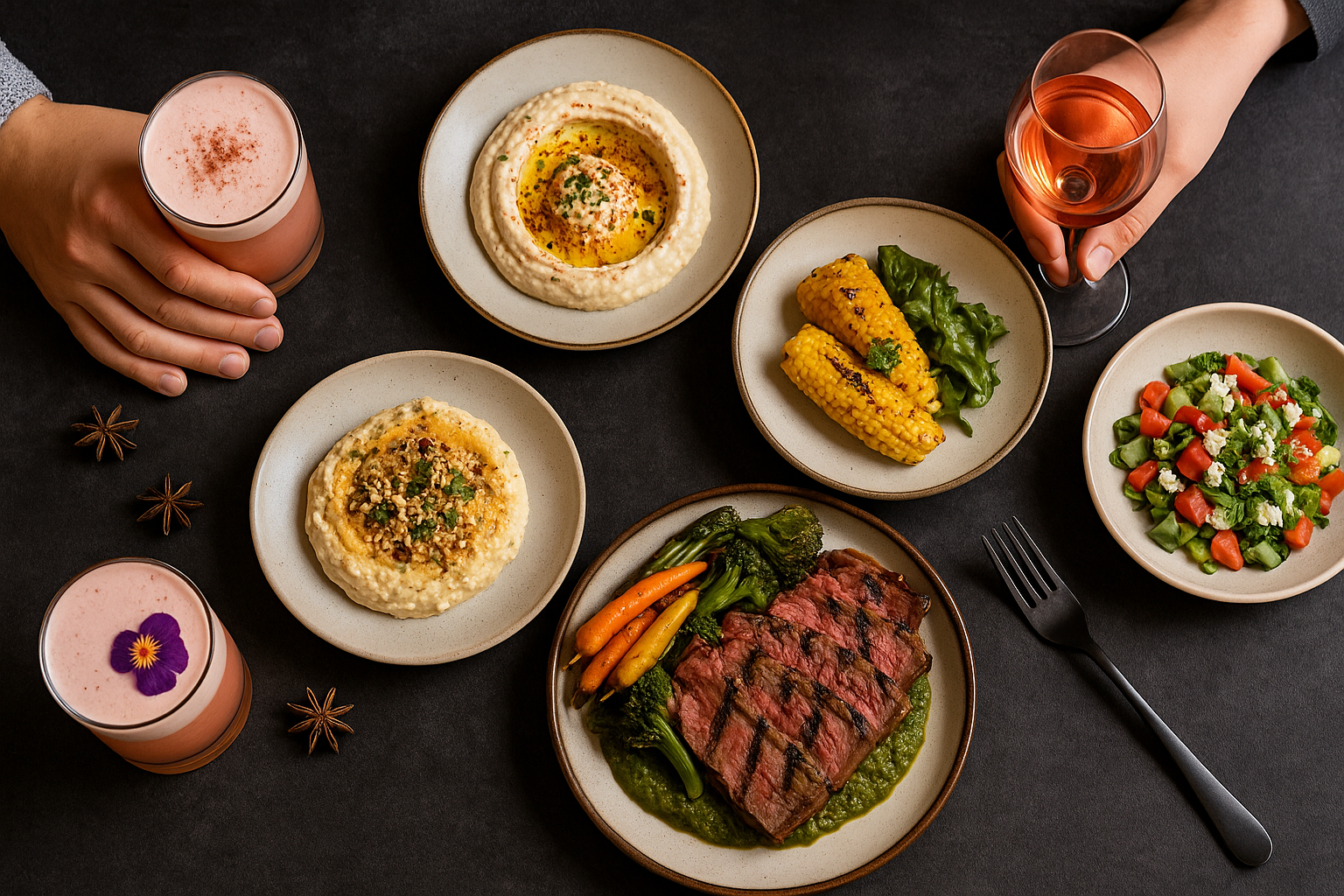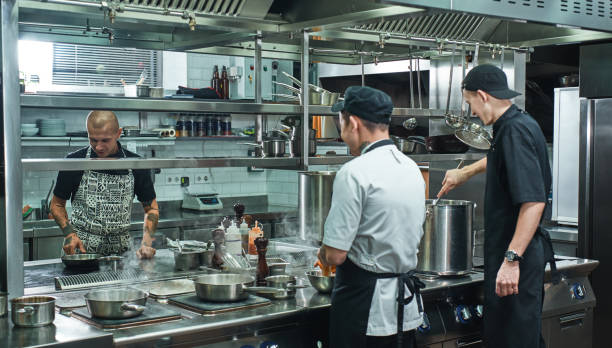Introduction
Çeciir is a traditional dish made from roasted chickpeas, seasoned with regional spices, and cherished in Somali and Turkish cultures. More than just a snack, it reflects heritage, hospitality, and community values. With its simple preparation and flavorful crunch, çeciir continues to connect generations through a shared love of ancestral cuisine.
What Is Çeciir?
Çeciir is a traditional, flavorful dish deeply rooted in North African and Middle Eastern culinary heritage, specifically celebrated in Somali and Turkish cultures. Often made from roasted chickpeas or similar legumes, çeciir is a beloved snack or light meal, offering both a satisfying crunch and a nutritious profile. It can be sweet, salty, or savory, depending on regional variations and personal tastes.
In many communities, çeciir is not just food — it symbolizes hospitality, shared memories, and cultural identity, passed from generation to generation.
The Historical Background and Origins of Çeciir
The roots of çeciir trace back centuries to ancient trade routes across North Africa, the Arabian Peninsula, and Anatolia. Chickpeas, the primary ingredient, have been a staple crop in these regions for millennia due to their resilience in arid climates.
Historically, roasting chickpeas was a method of preservation, allowing communities to store protein-rich food that would last through harsh seasons. Over time, as spices and herbs became more accessible through trade, evolved into a flavorful treat — varying slightly from region to region. In Somalia, it became a household snack offered to guests, while in Turkey, street vendors popularized it among bustling bazaars and public gatherings.
The dish thus became a culinary symbol of connection: a product of agricultural tradition and global cultural exchange.
The Process of Making Çeciir
Making authentic çeciir is a labor of love that combines patience, attention to detail, and respect for tradition. Here’s the general process:
- Selection of Chickpeas: It starts with high-quality, dried chickpeas. Smaller, dense varieties are often preferred for even roasting.
- Soaking: Chickpeas are soaked overnight to soften them slightly, allowing for a crisp yet tender final texture.
- Drying: After soaking, the chickpeas are carefully dried — either by patting them with cloths or leaving them to air dry — to remove excess moisture.
- Seasoning: The chickpeas are then tossed with a mixture of spices, oil, and sometimes sugar, depending on the flavor profile desired.
- Roasting: Finally, they are roasted at a low temperature over several hours, either in traditional ovens or over open coals, to achieve a perfect golden-brown finish.
Some regions add a light glaze or caramelize the chickpeas for a sweeter version, while others prefer a heavily spiced, savory version.
The Cultural Importance of Çeciir
Çeciir is more than a culinary delight — it is a cornerstone of cultural expression. In many Somali households, offering to visitors signifies warmth and hospitality. Similarly, in Turkish culture, sharing in social settings promotes community spirit.
During holidays, festivals, and even during Ramadan evenings, bowls of çeciir are often placed on communal tables. It serves as both a humble snack and a nostalgic reminder of family traditions, connecting present generations to their ancestors.
In rural settings, çeciir has been linked to wedding celebrations, village gatherings, and religious observances, symbolizing abundance and prosperity.
Community Engagement
Çeciir has a profound role in community engagement. Many local festivals feature making contests or workshops, where younger generations learn the traditional methods from elders.
Street vendors in cities sell çeciir in paper cones, creating vibrant, bustling atmospheres where people bond over shared flavors. Moreover, small businesses, especially women-led cooperatives, have taken çeciir beyond domestic kitchens, turning it into an economic opportunity.
Some modern cafés and organic stores are now promoting traditional çeciir as a healthy, high-protein snack, further blending cultural heritage with modern lifestyles.
Lodging and Service Industry
The lodging and service industries, particularly in regions like Turkey, Morocco, and Somalia, have embraced çeciir as part of their hospitality traditions. Many boutique hotels, guesthouses, and traditional inns offer complimentary bowls of çeciir to guests upon arrival, much like the Western custom of offering chocolates or nuts.
Including çeciir in hospitality services offers visitors an authentic cultural experience and highlights the host’s appreciation of tradition. Some high-end restaurants have even reimagined çeciir with gourmet twists — using exotic spices or serving it alongside artisan cheeses and dips.
Heritage Appreciation
Efforts to preserve and appreciate the heritage of çeciir have intensified in recent years. Cultural heritage organizations, food historians, and culinary artisans have documented traditional recipes and techniques to protect them from fading into obscurity.
In Somalia and Turkey, community-driven initiatives, such as oral history projects and traditional cooking classes, help ensure that çeciir remains a living tradition rather than a forgotten relic.
Moreover, global food trends emphasizing plant-based diets and ancestral foods have given çeciir renewed global attention, showcasing it as a model of sustainable, historical eating.
What Precisely Is Çeciir?
Çeciir refers specifically to a dish made from seasoned, roasted chickpeas, though variations exist depending on the region. It is typically crunchy, flavorful, and intended as a snack or accompaniment. The term “çeciir” is used more commonly in Somali contexts, while similar dishes in Turkey and neighboring regions may have different local names.
What Is the Pronunciation of Çeciir?
The pronunciation of “çeciir” is approximately “cheh-cheer”.
- The letter “ç” is pronounced like the English “ch” in “chocolate.”
- The double “i” is elongated, creating a soft, flowing pronunciation.
Which Spices Are Included in Çeciir?
Spices vary by recipe, but common additions include:
- Cumin – for a warm, earthy note
- Coriander – adding brightness
- Paprika – offering smokiness
- Black pepper – for a slight heat
- Salt – to enhance all flavors
- Turmeric – occasionally, for color and mild bitterness
- Cinnamon and Clove – in sweeter versions
Some modern adaptations even use za’atar, sumac, or cayenne pepper for added complexity.
What Are the Necessary Ingredients to Prepare Çeciir?
To make classic çeciir, you typically need:
- 2 cups dried chickpeas
- 2 tablespoons olive oil (or any preferred oil)
- 1 teaspoon salt
- 1 teaspoon cumin powder
- 1 teaspoon coriander powder
- ½ teaspoon paprika
- Optional: sugar or honey for sweet versions
Additional spices can be added based on taste preference.
What Accompaniments Are Suitable for Çeciir?
Çeciir pairs beautifully with a variety of accompaniments, such as:
- Mint tea or black tea – common in Somali and Middle Eastern traditions
- Fresh fruits – to balance the savory crunch
- Yogurt dips – especially those spiced with garlic or herbs
- Flatbreads – like pita or naan
- Olives and pickled vegetables – for a Mediterranean-inspired snack platter
Çeciir also makes an excellent topping for salads or soups, adding both texture and protein.
Conclusion
Çeciir is a shining example of how a simple ingredient — the humble chickpea — can carry profound cultural significance, historical depth, and culinary delight. Rooted in ancient practices and still vibrant today, it bridges generations, communities, and cultures with each delicious, crunchy bite.
Whether enjoyed casually at a street fair, offered ceremoniously in a family home, or reimagined by contemporary chefs, çeciir remains a beloved and enduring symbol of shared heritage and simple pleasures.
In embracing çeciir, we celebrate more than food; we honor tradition, community, and the timeless magic of culinary storytelling.
FAQS
1. What is çeciir made of?
Çeciir is primarily made of roasted chickpeas seasoned with a variety of spices like cumin, coriander, and paprika.
2. How do you pronounce çeciir?
Çeciir is pronounced as “cheh-cheer,” with a soft “ch” sound at the beginning.
3. Is çeciir a healthy snack?
Yes, çeciir is rich in protein and fiber, making it a nutritious and satisfying plant-based snack option.
4. Can çeciir be sweet?
Absolutely! Some versions of çeciir are lightly sweetened with sugar or honey for a delicious twist.
5. What drinks pair well with çeciir?
Mint tea, black tea, or light herbal infusions perfectly complement the savory and spiced flavors of çeciir.


